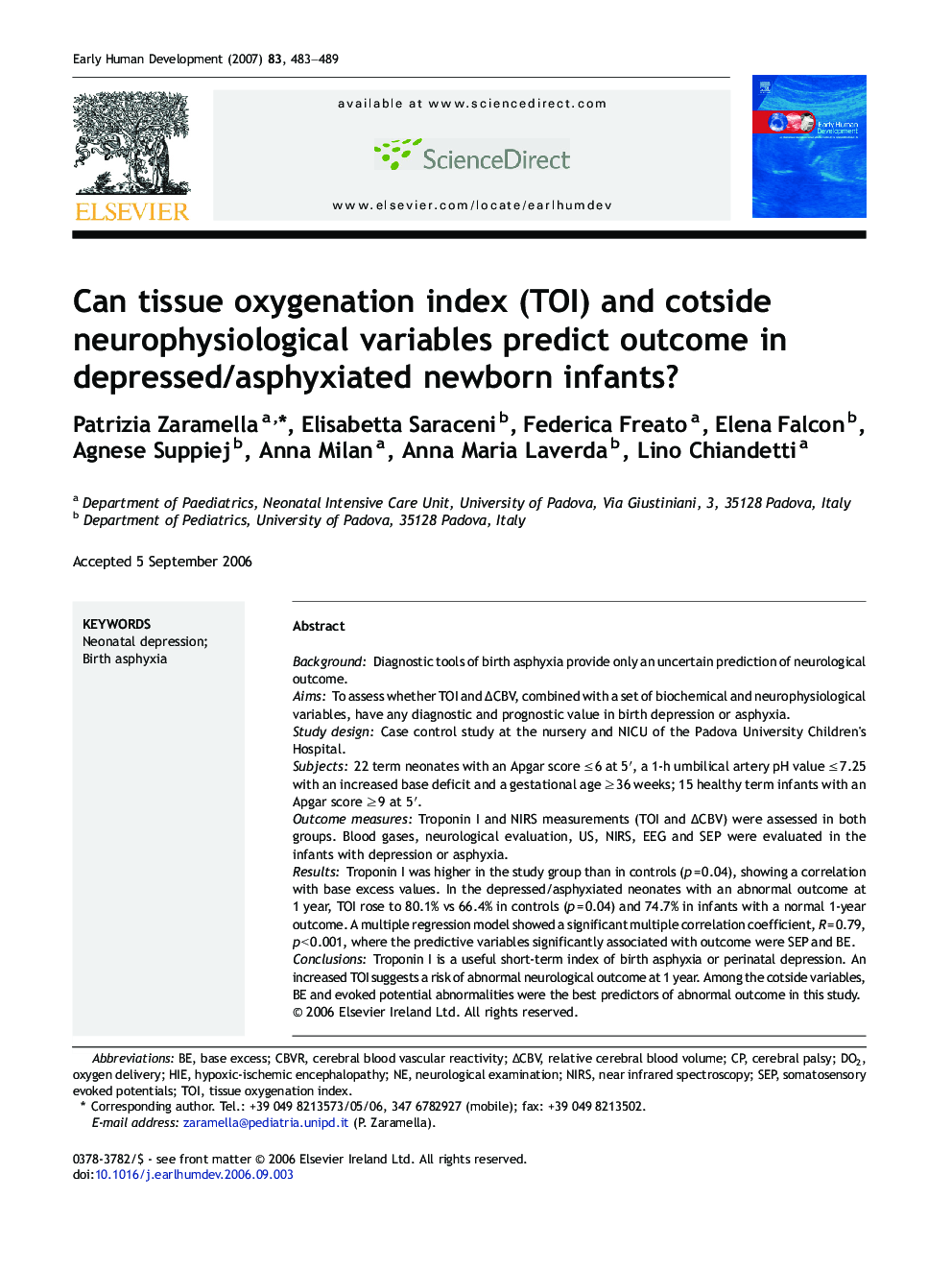| Article ID | Journal | Published Year | Pages | File Type |
|---|---|---|---|---|
| 3918611 | Early Human Development | 2007 | 7 Pages |
BackgroundDiagnostic tools of birth asphyxia provide only an uncertain prediction of neurological outcome.AimsTo assess whether TOI and ΔCBV, combined with a set of biochemical and neurophysiological variables, have any diagnostic and prognostic value in birth depression or asphyxia.Study designCase control study at the nursery and NICU of the Padova University Children's Hospital.Subjects22 term neonates with an Apgar score ≤ 6 at 5′, a 1-h umbilical artery pH value ≤ 7.25 with an increased base deficit and a gestational age ≥ 36 weeks; 15 healthy term infants with an Apgar score ≥ 9 at 5′.Outcome measuresTroponin I and NIRS measurements (TOI and ΔCBV) were assessed in both groups. Blood gases, neurological evaluation, US, NIRS, EEG and SEP were evaluated in the infants with depression or asphyxia.ResultsTroponin I was higher in the study group than in controls (p = 0.04), showing a correlation with base excess values. In the depressed/asphyxiated neonates with an abnormal outcome at 1 year, TOI rose to 80.1% vs 66.4% in controls (p = 0.04) and 74.7% in infants with a normal 1-year outcome. A multiple regression model showed a significant multiple correlation coefficient, R = 0.79, p < 0.001, where the predictive variables significantly associated with outcome were SEP and BE.ConclusionsTroponin I is a useful short-term index of birth asphyxia or perinatal depression. An increased TOI suggests a risk of abnormal neurological outcome at 1 year. Among the cotside variables, BE and evoked potential abnormalities were the best predictors of abnormal outcome in this study.
